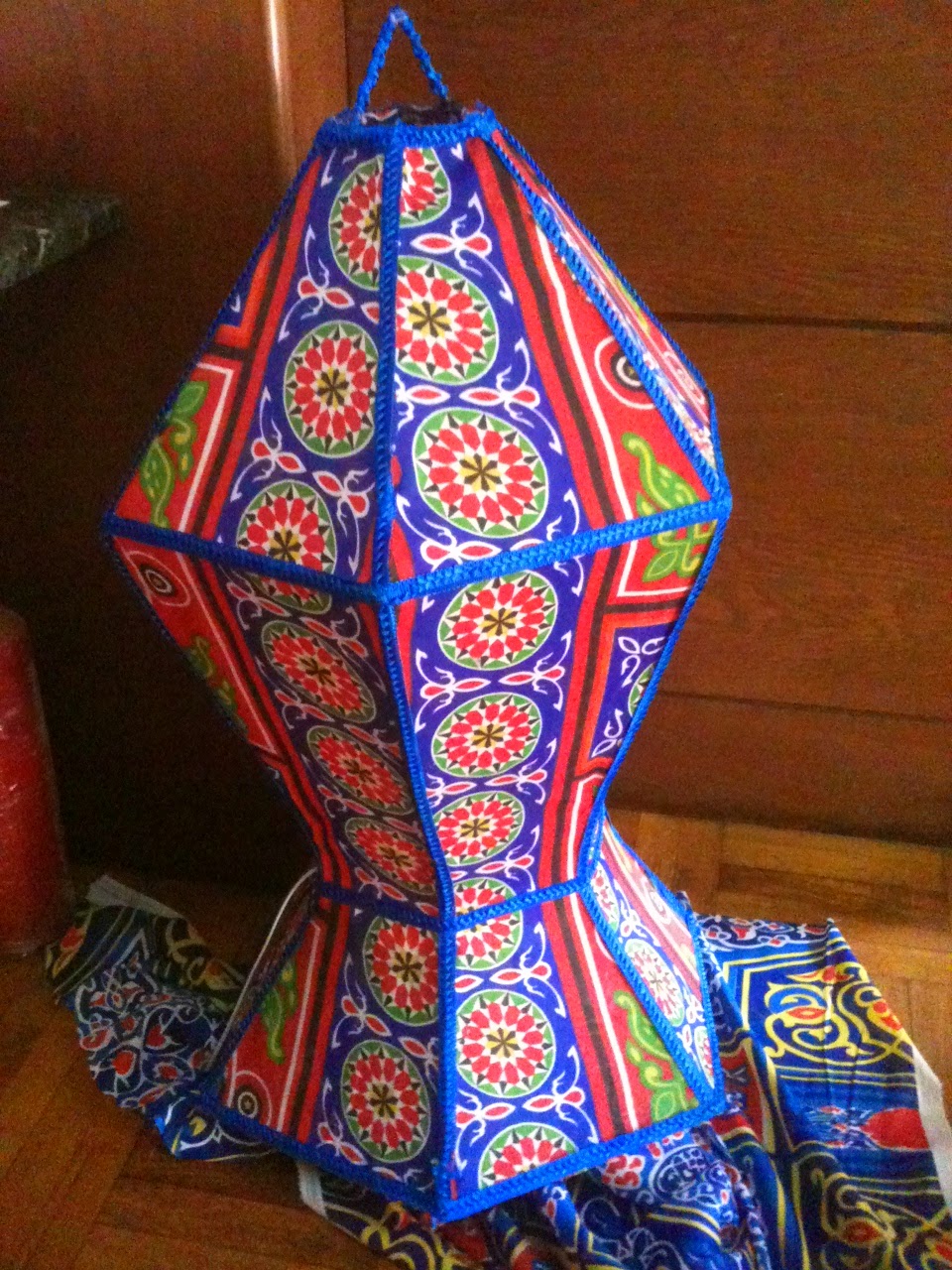RAMADAN:
This is the month of fasting that is one of the 5 pillars of the Muslim faith. During this time a unique symbol and an almost magical tradition lights up every street. This is the wonderful, shining 800 year tradition, something which makes even the bleakest street become beautiful:
THE FANOOS:
This is the name given to the Ramadan lamps, that are seen to dangle from balconies, hang above entrances to buildings, shine out from shop windows, and be on sale on every street corner.
THE HISTORY:
There are several stories (and versions of stories) about how it all began:
* One is that on the 24th July 968 AD the Caliph entered Cairo at night, with the people of the city carrying torches and candles to welcome him. To shield the flame from the wind, they wrapped them in palms and leather.
* Another story is that the Caliph wanted to light the streets and ordered mosques to hang fanoos lamps outside.
* Yet another story is that young boys had to walk in front of women (who were not supposed to be out alone on the streets) carrying a copper Fanoos to warn men to move out of the way.
* Another opinion is that the origins of the Fanoos were from Christmas lights, and as the Coptic believers in Egypt became Muslims, they changed from christmas lights to candles in simple tin containers to be used during the holy month of Ramadan.
Whichever story is true, or even if all of them, the fact remains that Ramadan is now integrally connected to the light and brightness of the fanoos: every home desires one, every child wants one, schools even make them to take home, and there are types for every pocket. Every child wants to swing their Fanoos after the Iftar meal, singing traditional songs and visiting neighbors and relatives.
TYPES OF FANOOS:
Initially the lamps were made of tin and had candles within, now many have fancy “airing grid” designs and even colored glass.
* simple (usually made in china, and as usually key chains!)
* complex (some can be found made of copper, with intricate designs)
* musical (some have pre-recorded Ramadan songs emitting from them)
* recycled tin
* made from fabric (special Ramadan designs)
* battery operated, or electric (light bulbs)
* with candles
Although many are now cheaply mass produced in China (with a very short shelf life) you can still find the traditional fanoos maker, in some small alcove or shop, where he will make them from tin, crafting them in the traditional shape.
But whichever type, Fanawees (plural word of Fanoos) are now a symbolic decoration welcoming the month of Ramadan, and they combat the darkness with grace and beauty, delighting the hearts of all who see them.


No comments:
Post a Comment